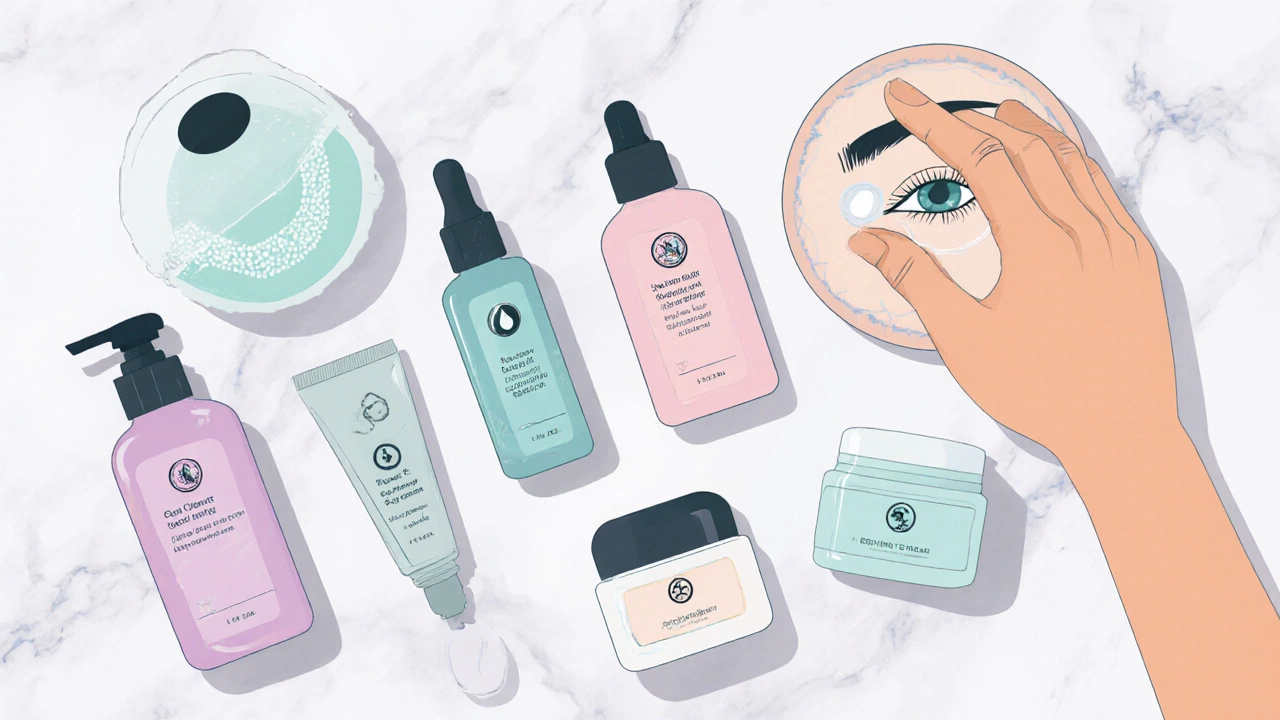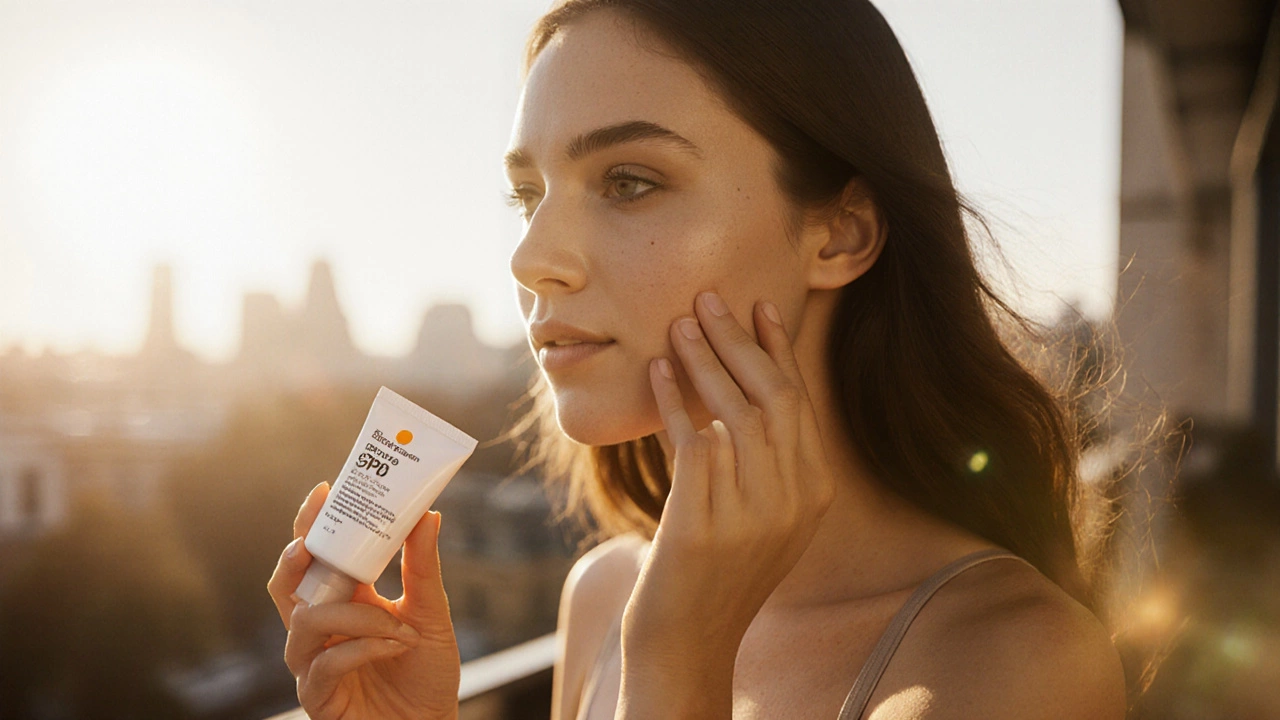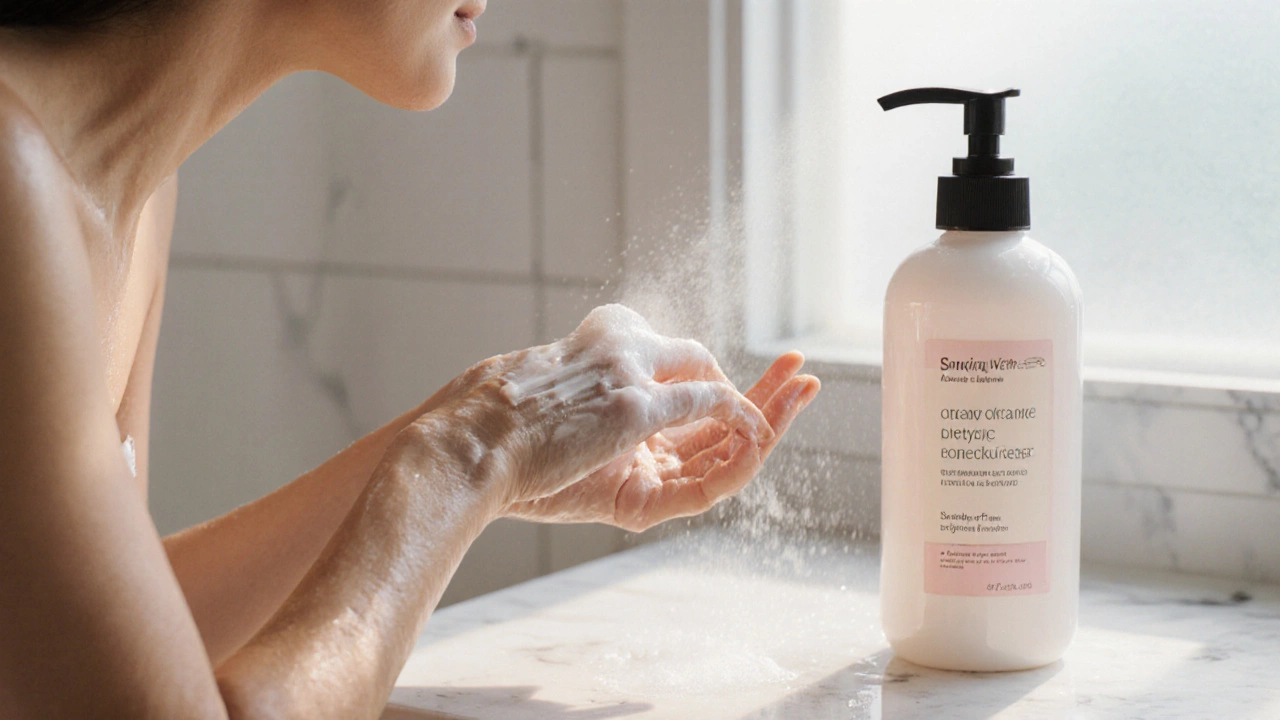7-Step Skincare Routine Explorer
Select a step from the dropdown to view details about that part of the skincare routine.
Complete 7-Step Routine Overview
Cleanser
Removes dirt, oil, and makeup while maintaining skin's natural moisture barrier.
Exfoliator
Removes dead skin cells to reveal smoother, brighter skin.
Toner
Restores skin's pH balance and prepares it for the next products.
Serum
Delivers concentrated active ingredients deep into the skin.
Eye Cream
Targets the delicate under-eye area with specialized ingredients.
Moisturizer
Seals in hydration and protects the skin's moisture barrier.
Sunscreen
Protects against harmful UV rays that cause premature aging and skin cancer.
7-step skincare routine is a systematic daily process that helps keep skin clear, hydrated, and protected. Most people start with a vague idea of "wash, moisturize, sunscreen" and end up missing crucial steps that address specific skin needs. This guide walks you through every stage, explains why each step matters, and gives practical tips so you can build a routine that works for any skin type.
Key Takeaways
- 7-step skincare routine covers cleansing, exfoliating, toning, treating, eye care, moisturizing, and sun protection.
- Choose products based on skin type, active ingredients, and time of day.
- Consistency beats perfection - a simple routine done daily is better than an elaborate one you skip.
- Adjust the routine seasonally; lighter textures in summer, richer formulas in winter.
- If irritation occurs, backtrack to the previous step and simplify.
Why a Seven‑Step Routine Works
Skin is a barrier that constantly faces pollutants, UV rays, and water loss. Each step in the routine targets a specific function:
- Cleanse removes dirt and makeup.
- Exfoliate clears dead cells, allowing newer cells to surface.
- Tone restores pH balance and preps skin for actives.
- Treat (serums) delivers concentrated ingredients.
- Eye care protects the delicate under‑eye area.
- Moisturize locks in hydration.
- Sun protect shields from UV‑induced damage.
Skipping any of these can leave gaps that lead to breakouts, dryness, or premature aging.
Step 1 - Cleanser
Cleanser is your first line of defense. It should dissolve makeup, oil, and pollutants without stripping natural oils. For oily skin, a foaming gel with salicylic acid works well. Dry or sensitive skin benefits from a cream‑based cleanser containing ceramides. Apply the product to damp skin, massage for 30 seconds, then rinse with lukewarm water. Pat dry with a soft towel; rubbing can cause micro‑tears.
Step 2 - Exfoliator
Exfoliation removes the layer of dead skin cells that can make the complexion look dull. There are two main types:
- Physical exfoliants - fine beads or sugar particles. Use 1‑2 times per week to avoid irritation.
- Chemical exfoliants - alpha‑hydroxy acids (AHA) like glycolic acid or beta‑hydroxy acids (BHA) like salicylic acid. These dissolve bonds between cells and are gentler for daily use in low concentrations.
Choose an exfoliator that matches your skin concerns: AHA for fine lines and uneven tone, BHA for clogged pores.
Step 3 - Toner
After cleansing, the skin’s pH can shift to a more alkaline level. Toner restores the natural pH (around 5.5) and adds a lightweight layer of hydration. Look for ingredients like witch hazel for oily skin or rose water for calming effects. Apply with a cotton pad or pat directly with clean hands.

Step 4 - Serum (Treatment)
Serums are concentrated solutions that deliver active ingredients deeper into the skin. Common actives include:
- Vitamin C - brightens and fights free‑radical damage.
- Niacinamide - reduces redness and regulates oil.
- Retinol - encourages cell turnover for anti‑aging.
Because serums are potent, a pea‑sized amount is enough for the entire face. Apply after toner, allowing the skin to absorb before moving to the next step.
Step 5 - Eye Cream
The skin around the eyes is about 0.5mm thick, making it prone to dehydration and fine lines. Eye cream usually contains peptides, hyaluronic acid, and caffeine to reduce puffiness. Use the ring finger to tap a small dab gently, avoiding pulling on the delicate tissue.
Step 6 - Moisturizer
Moisturizing seals all previous steps and supplies a barrier against water loss. Choose a texture based on climate and skin type:
- Gel moisturizers - ideal for humid environments; they contain humectants like glycerin.
- Cream moisturizers - richer, better for dry or cold weather; they include occlusives such as shea butter.
Apply in upward strokes, focusing on areas that feel tight.
Step 7 - Sunscreen
Sun exposure is the leading cause of premature aging and skin cancer. A broad‑spectrum sunscreen with at least SPF30 should be the final morning step. Look for ingredients like zinc oxide or avobenzone that protect UVA and UVB rays. Apply liberally - about a teaspoon for the face - and reapply every two hours when outdoors.
Putting It All Together: Daily Checklist
- Cleanse - 30seconds, lukewarm water.
- Exfoliate - 2‑3 times/week, based on skin tolerance.
- Toner - pat onto skin, no rinse.
- Serum - target specific concerns.
- Eye cream - gentle tap.
- Moisturizer - lock in hydration.
- Sunscreen - morning only, reapply as needed.
If a product causes redness or excessive dryness, pause its use and consult a dermatologist. They can recommend formulations that suit your skin’s barrier function.

Comparison Table of Core Products
| Step | Typical Ingredient | Primary Benefit | Recommended Frequency |
|---|---|---|---|
| Cleanser | Salicylic acid, ceramides | Removes dirt & makeup | Twice daily |
| Exfoliator | Glycolic acid, jojoba beads | Unclogs pores, brightens | 1‑3 times/week |
| Toner | Witch hazel, rose water | Balances pH, preps skin | Every cleanse |
| Serum | Vitamin C, niacinamide | Targets specific concerns | Every cleanse |
| Eye Cream | Peptides, caffeine | Reduces puffiness, fine lines | Twice daily |
| Moisturizer | Hyaluronic acid, shea butter | Locks in hydration | Twice daily |
| Sunscreen | Zinc oxide, avobenzone | Protects against UV damage | Every morning, reapply |
Common Mistakes and How to Fix Them
- Over‑exfoliating - leads to redness and barrier loss. Reduce frequency or switch to a milder AHA.
- Skipping sunscreen - even on cloudy days. Keep a travel‑size SPF in your bag.
- Using the wrong texture for the season - heavy creams in summer can feel greasy; swap to gel‑based moisturizers.
- Layering products in the wrong order - always go from thinnest to thickest consistency.
Next Steps for Different Skin Types
Oily Skin: Focus on gel cleansers, BHA exfoliants, and oil‑free moisturizers. Keep the sunscreen lightweight.
Dry Skin: Opt for cream cleansers, HA serums, and rich moisturizers containing ceramides. Sunscreen with added moisturizing agents works best.
Sensitive Skin: Choose fragrance‑free formulas, limit exfoliation to once a week, and favor soothing toners like oat‑based ones.
Frequently Asked Questions
Can I skip the toner?
Tonner isn’t mandatory, but it helps restore pH and preps the skin for actives. If you enjoy a minimalist routine, choose a serum with hydrating ingredients that can double as a light toner.
How often should I use retinol?
Start with twice a week at night and monitor tolerance. Gradually increase to every other night. Pair with a gentle moisturizer to reduce irritation.
Is extra‑dry skin a sign of a problem?
Dryness can signal a compromised barrier or environmental stress. Look for flaking, itching, or redness. Adding a hyaluronic acid serum and a richer night cream usually helps; persistent issues warrant a dermatologist visit.
Do I need a separate night routine?
At night, you can skip sunscreen and use a richer moisturizer or a night‑specific serum like retinol. The first five steps (cleanse to serum) stay the same; the final moisturizing step can be more intensive.
How long does it take to see results?
Visible improvements usually appear after 4‑6 weeks, which aligns with the skin’s natural turnover cycle. Consistency is the key driver.
Final Thoughts
Building a solid 7-step skincare routine doesn’t require a million products; it calls for the right ones applied in the right order. Start simple, track how your skin reacts, and tweak the actives as needed. Within a few weeks you’ll notice smoother texture, clearer pores, and a glow that lasts all day.
